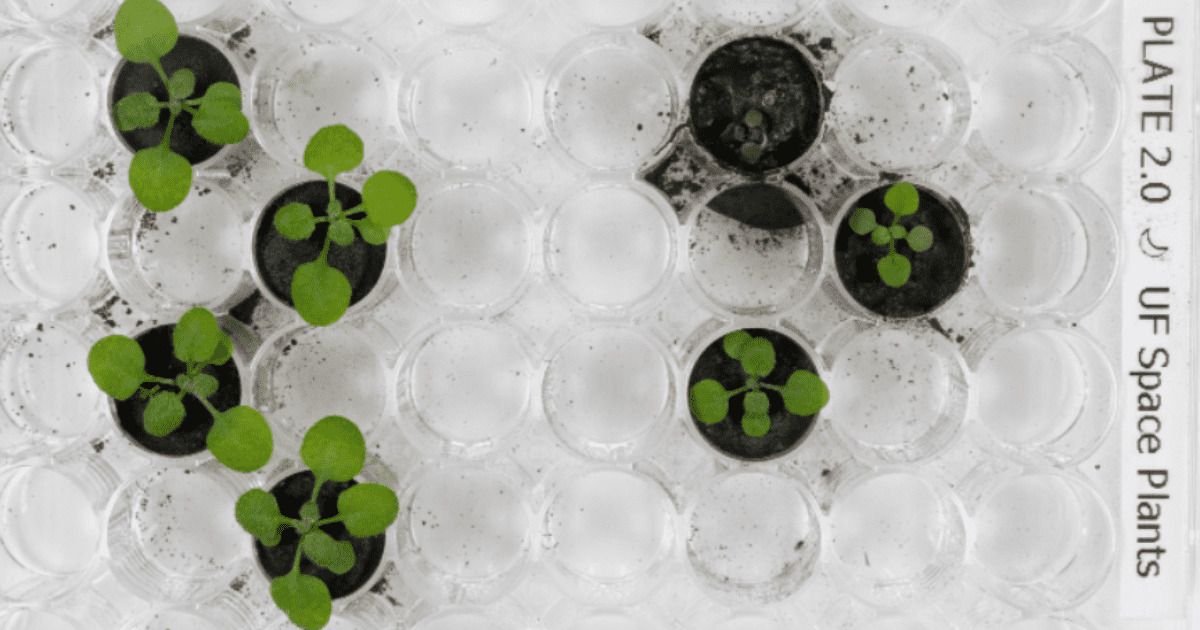Scientists from the University of Florida have just planted seeds from the Arabidopsis thaliana plant inside lunar soil.
The scientists and researchers from the University of Florida used decades-old moon soil from the Apollo Missions to plant their seeds.
Days after the scientists planted the seeds, sprouts immediately sprung up.
Take a look at them here:
Trending: FACT-CHECK: Is The Butt Baby Real?
For the first time ever, scientists have grown plants in lunar soil.
This @UF and @NASASpaceSci experiment using Apollo Moon samples could shape the future of sustainable astronaut missions to deep space. Dig into the story: https://t.co/ZtUvowKi8e pic.twitter.com/PWGzev7lmN
— NASA (@NASA) May 12, 2022
BIG NEWS: Researchers grew plants in lunar soil for the first time! 🌱🌖
Congrats to @UF on growing Arabidopsis plants in regolith collected during the Apollo era. We’ll study the same species on #Artemis I as we prep to return to the Moon. https://t.co/fsollo0lvX pic.twitter.com/ZsjKKZXu9v
— NASA Space Science (@NASASpaceSci) May 12, 2022
Washington Examiner added these details:
Researchers were over the moon about the earth-shattering discovery that seeds can grow in moon soil in a first-of-its-kind test.
Scientists at the University of Florida successfully planted seeds from the Arabidopsis thaliana plant, commonly known as thale cress, into teaspoon-sized samples of lunar soil collected during the 1969-1972 Apollo missions, which in turn sprouted days later.
“This research is critical to NASA’s long-term human exploration goals as we’ll need to use resources found on the Moon and Mars to develop food sources for future astronauts living and operating in deep space,” said NASA Administrator Bill Nelson in a Thursday statement. “This fundamental plant growth research is also a key example of how NASA is working to unlock agricultural innovations that could help us understand how plants might overcome stressful conditions in food-scarce areas here on Earth.”
The seeds sprouted just two days after they were planted. Around day six, the sprouts in the lunar sample began to look different than those in the control group, some with stunted roots or leaves and others sporting a reddish pigmentation.
Scientists have grown plants in lunar soil for the first time, using dust collected during the 1969-1972 Apollo missions to grow a type of cress. The seeds sprouted after 2 days but started to show stress, developed more slowly, and ended up stuntedhttps://t.co/Mt8lmQTOWg
— Alfons López Tena 🦇 (@alfonslopeztena) May 13, 2022
NASA added these details:
In the early days of the space age, the Apollo astronauts took part in a visionary plan: Bring samples of the lunar surface material, known as regolith, back to Earth where they could be studied with state-of-the-art equipment and saved for future research not yet imagined. Fifty years later, at the dawn of the Artemis era and the next astronaut return to the Moon, three of those samples have been used to successfully grow plants. For the first time ever, researchers have grown the hardy and well-studied Arabidopsis thaliana in the nutrient-poor lunar regolith.
“This research is critical to NASA’s long-term human exploration goals as we’ll need to use resources found on the Moon and Mars to develop food sources for future astronauts living and operating in deep space,” said NASA Administrator Bill Nelson. “This fundamental plant growth research is also a key example of how NASA is working to unlock agricultural innovations that could help us understand how plants might overcome stressful conditions in food-scarce areas here on Earth.”
Scientists at the University of Florida have made a breakthrough discovery — decades in the making — that could both enable space exploration and benefit humanity. “Here we are, 50 years later, completing experiments that were started back in the Apollo labs,” said Robert Ferl, a professor in the Horticultural Sciences department at the University of Florida, Gainesville, and a communicating author on a paper published on May 12, 2022, in Communications Biology. “We first asked the question of whether plants can grow in regolith. And second, how might that one day help humans have an extended stay on the Moon.”



Join the conversation!
Please share your thoughts about this article below. We value your opinions, and would love to see you add to the discussion!